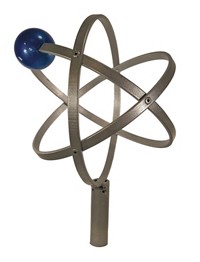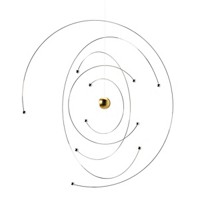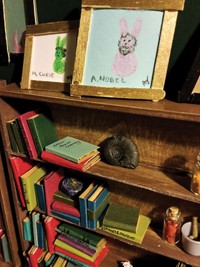Advertisement
Grab your lab coat. Let's get started
Welcome!
Welcome!
Create an account below to get 6 C&EN articles per month, receive newsletters and more - all free.
It seems this is your first time logging in online. Please enter the following information to continue.
As an ACS member you automatically get access to this site. All we need is few more details to create your reading experience.
Not you? Sign in with a different account.
Not you? Sign in with a different account.
ERROR 1
ERROR 1
ERROR 2
ERROR 2
ERROR 2
ERROR 2
ERROR 2
Password and Confirm password must match.
If you have an ACS member number, please enter it here so we can link this account to your membership. (optional)
ERROR 2
ACS values your privacy. By submitting your information, you are gaining access to C&EN and subscribing to our weekly newsletter. We use the information you provide to make your reading experience better, and we will never sell your data to third party members.
3-D Printing
Newscripts
Chemical plating
by Bethany Halford
February 8, 2020
| A version of this story appeared in
Volume 98, Issue 6
When TLC goes 3-D

Do chemists really shell out $750 for a piece of lab equipment just to cut glass? That’s what Ramesh Jasti, a chemistry professor at the University of Oregon, asked chemists on Twitter back in October. He was bemoaning the price of cutters for thin-layer chromatography plates.
And they are expensive. “Simply score the back of a coated plate and snap off the exact size you need,” touts the description of one such cutter, which retails for $945.
Upon seeing Jasti’s tweet, one of his former graduate students, Evan Darzi, tweeted back, “I’d bet some savvy 3D printer inclined person could make one that could house one of the cheap cutters.”
Enter Kyle Plunkett, a chemistry professor at Southern Illinois University who has a 3-D printer in his office and a thin-layer chromatography plate cutter in his lab. “I thought it would be relatively straightforward to do,” he tells Newscripts. “The design is basically just some blocks that are built on top of each other.”
If you’re unfamiliar with thin-layer chromatography (lovingly shortened to TLC), it’s a technique chemists use to follow the progress of chemical reactions and separations. It involves placing spots of chemicals onto the bottom of a TLC plate—usually a piece of glass coated in silica. The base of the plate is then placed in a solvent, which travels up the plate by capillary action, carrying the chemical spots with it. The spots will move along the plate at different rates depending on their properties. Using ultraviolet light or a stain, researchers can visualize the spots and compare the starting material with the product of a reaction.
TLC plates are pricey—about $5 for a 400 cm2 plate—so chemists typically slice those into smaller plates to save money.
“When I was in grad school, we just cut it by hand with metal ruler,” Jasti tweeted. But that technique can be tough to master and can produce aesthetically unpleasant, nonuniform plates at best and shattered plates at worst. That’s where the expensive cutter comes in.
To make the 3-D printed version, Plunkett cribbed the design from his existing cutter. His version cost about $5 in printer plastic, and he bought the part that does the actual cutting from Amazon for about $20. The cutter worked well, so he posted instructions for making it on Thingiverse, an online 3-D printing community. The plans have been downloaded nearly 200 times. Plunkett says anyone who has used the design and wants to thank him can buy him a beer at the next American Chemical Society national meeting.
Jasti tells Newscripts that his lab hasn’t made a 3-D printed TLC plate cutter yet. Nevertheless, the design “was a simple yet powerful demonstration of how useful 3-D printing can be,” he says, and “also a good example of the usefulness of Twitter.”
Chemists in cars getting clever

News of a different kind of plate landed in the Newscripts inbox recently. Craig Merlic, a chemistry professor at the University of California, Los Angeles, sent in a photo of the back of a Tesla with the license plate 9 C8H18.
“I think this Tesla driver on Sunset Blvd speaks chemistry and German,” Merlic wrote. The vanity plate, which seems to read “nein octane,” roughly translates to “no octane.” It seems appropriate on an electricity-powered vehicle.

The photo prompted C&EN executive editor Jyllian Kemsley to share a snap she took of a Tesla bearing the plate REDOX1, which chemists will recognize is the chemical shorthand for oxidation-reduction.
This reminded the Newscripts gang of a column from 2005, in which readers wrote in about chemically themed license plates they’d spotted—usually on their own cars. Seems like time for an update. Readers, what clever chemistry have you seen on license plates lately?
Bethany Halford wrote this week’s column. Please send comments and suggestions to newscripts@acs.org.





Join the conversation
Contact the reporter
Submit a Letter to the Editor for publication
Engage with us on Twitter